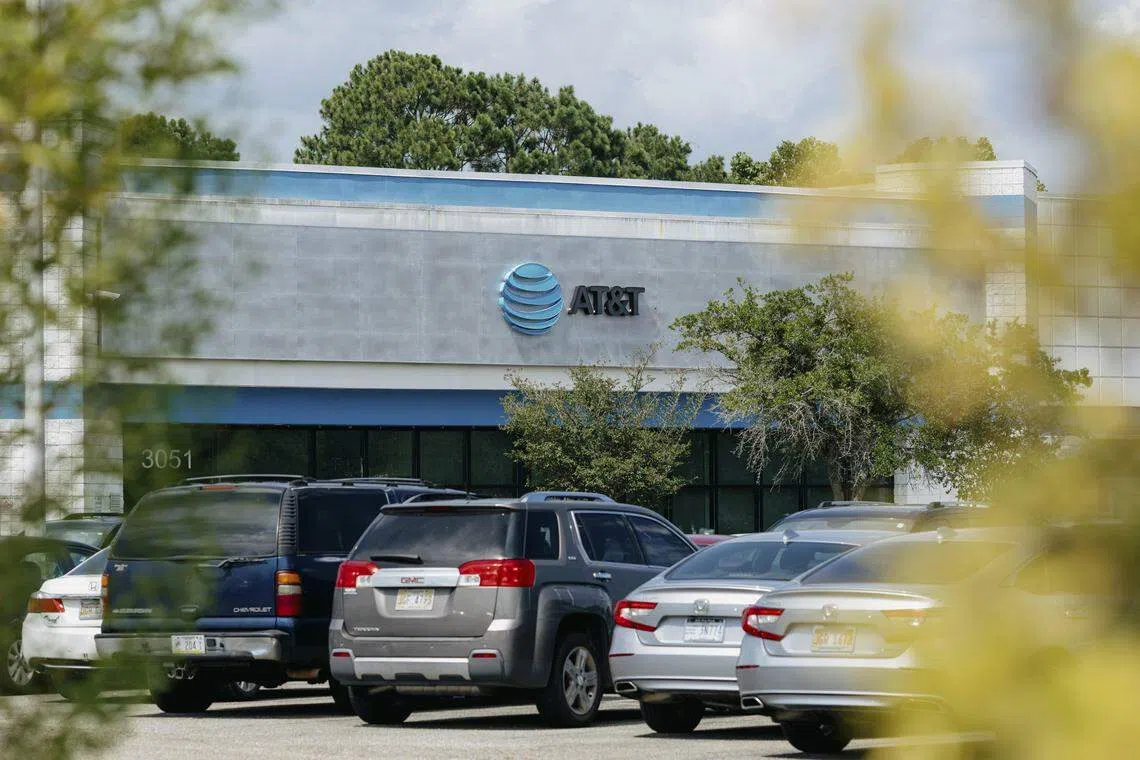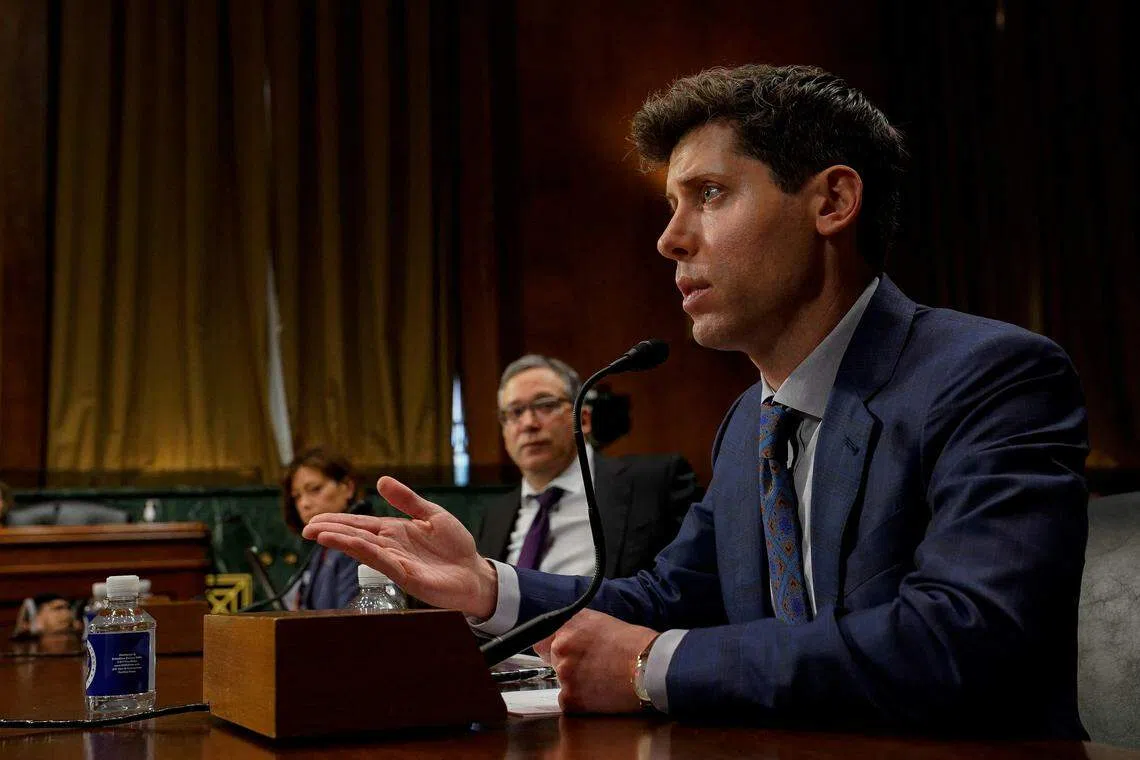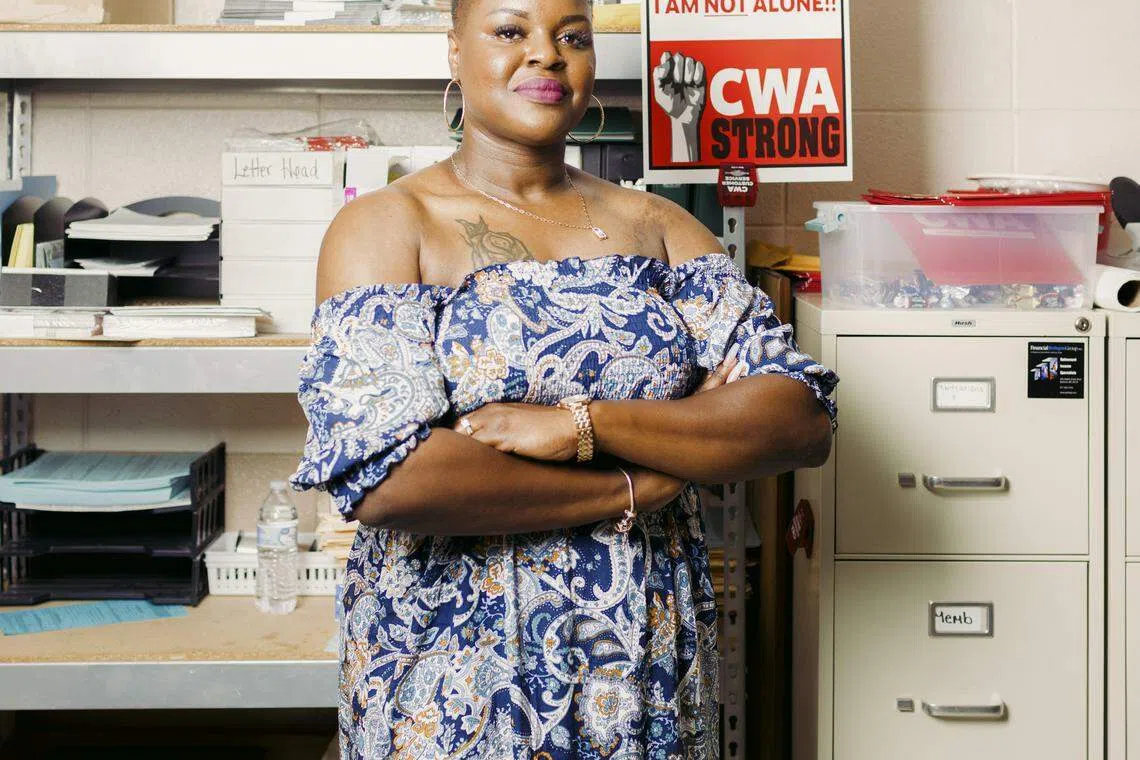‘Training my replacement’: Inside a call centre worker’s battle with AI
LIKE so many millions of American workers across so many thousands of workplaces, the roughly 230 customer service representatives at AT&T’s call centre in Ocean Springs, Mississippi, watched artificial intelligence (AI) arrive over the past year both rapidly and assuredly, like a new manager settling in and kicking up its feet.
Suddenly, the customer service workers weren’t taking their own notes during calls with customers. Instead, an AI tool generated a transcript, which their managers could later consult. AI technology was providing suggestions of what to tell customers. Customers were also spending time on phone lines with automated systems, which solved simple questions and passed on the complicated ones to human representatives.
Ylonda Sherrod, 38, who exudes quiet confidence at 5-foot-11, regarded the new technology with a combination of irritation and fear. “I always had a question in the back of my mind,” she said. “Am I training my replacement?”
Sherrod, a vice-president of the call centre’s local union chapter, part of the Communications Workers of America, started asking AT&T managers questions. “If we don’t talk about this, it could jeopardise my family,” she said. “Will I be jobless?”
In recent months, the AI chatbot ChatGPT has made its way into courtrooms, classrooms, hospitals and everywhere in between. With it has come speculation about AI’s impact on jobs. To many people, AI feels like a ticking time bomb, sure to explode their work. But to some, such as Sherrod, the threat of AI isn’t abstract. They can already feel its effects.
When automation swallows up jobs, it often comes for customer service roles first, which make up about three million jobs in America. Automation tends to overtake tasks that repeat themselves; customer service, already a major site for outsourcing of jobs abroad, can be a prime candidate.

A majority of US call centre workers surveyed this year reported that their employers were automating some of their work, according to a 2,000-person survey from researchers at Cornell. Nearly two-thirds of respondents said that they felt it was somewhat or very likely that increased use of bots would lead to layoffs within the next two years.
Technology executives point out that fears of automation are centuries old – stretching back to the Luddites, who smashed and burned textile machines – but have historically been undercut by a reality in which automation creates more jobs than it eliminates.
But that job creation happens gradually. The new jobs that technology creates, like engineering roles, often demand complex skills. That can create a gap for workers such as Sherrod, who found what seemed like a golden ticket at AT&T: a job that pays US$21.87 an hour and up to US$3,000 in commissions a month, she said, and provides healthcare and five weeks of vacation – all without the requirement of a college degree. (Less than 5 per cent of AT&T’s roles require a college education.)
Customer service, to Sherrod, meant that someone like her – a young black woman raised by her grandmother in small-town Mississippi – could make “a really good living”.
“We’re breaking generational curses,” Sherrod said. “That’s for sure.”
In Sherrod’s childhood home, a one-storey, brick A-frame in Pascagoula, Mississippi, money was tight. Her mother died when she was five. Her grandmother, who took her in, didn’t work, but Sherrod remembers getting food stamps to take to the corner bakery whenever the family could spare them. Sherrod cries recalling how Christmas used to be. The family had a plastic tree and tried to make it festive with ornaments, but there was typically no money for presents.
To students at Pascagoula High School, she recalled, job opportunities seemed limited. Many went to Ingalls Shipbuilding, a shipyard where work meant blistering days under the Mississippi sun. Others went to the local Chevron refinery.
“It felt like I was going to always have to do hard labour in order to make a living,” Sherrod explained. “It seemed like my lifestyle would never be something with ease, something I enjoyed.”
When Sherrod was 16, she worked at KFC, making US$6.50 an hour. After graduating from high school and dropping out of community college, she moved to Biloxi, Mississippi, to work as a maid at IP Casino, a 32-storey hotel, where her sister still works.
Within months of working at the casino, Sherrod felt the toll of the job on her body. Her knees ached, and her back thrummed with pain. She had to clean at least 16 rooms a day, fishing hair out of bathroom drains and rolling up dirty sheets.
When a friend told her about the jobs at AT&T, the opportunity seemed, to Sherrod, impossibly good. The call centre was air-conditioned. She could sit all day and rest her knees. She took the call centre’s application test twice, and on her second time, she got an offer, in 2006, starting out making US$9.41 an hour, up from around US$7.75 at the casino.
‘Your biggest nightmare’

This spring, lawmakers in Washington hauled forward the makers of AI tools to begin discussing the risks posed by the products they’ve unleashed.
“Let me ask you what your biggest nightmare is,” Senator Richard Blumenthal, D-Connecticut, asked OpenAI’s CEO, Sam Altman, after sharing that his own greatest fear was job loss. “There will be an impact on jobs,” said Altman, whose company developed ChatGPT.
That reality has already become clear. British telecommunications company BT Group announced in May that it would cut up to 55,000 jobs by 2030 as it increasingly relied on AI. The CEO of IBM said that AI would affect certain clerical jobs in the company, eliminating the need for up to 30 per cent of some roles, while creating new ones.
AT&T has begun integrating AI into many parts of its customer service work, including routing customers to agents, offering suggestions for technical solutions during customer calls and producing transcripts.
The company said that all of these uses were intended to create a better experience for customers and workers. “We’re really trying to focus on using AI to augment and assist our employees,” said Nicole Rafferty, who leads AT&T’s customer care operation and works with staff members nationwide.
“We’re always going to need in-person engagement to solve those complex customer situations,” Rafferty added. “That’s why we’re so focused on building AI that supports our employees.”
Economists studying AI have argued that it most likely won’t prompt sudden widespread layoffs. Instead, it could gradually eliminate the need for humans to do certain tasks – and make the remaining work more challenging.
Sherrod is already finding her job growing more challenging with AI. The automated technology has a hard time understanding Sherrod’s drawl, she said, so the transcripts from her calls are full of mistakes. Once the technology is no longer in a pilot phase, she won’t be able to make corrections. (AT&T said that it was refining the AI products it used to prevent these kinds of errors.)
It seems likely, to Sherrod, that at some point, as the work gets more efficient, the company won’t need quite as many humans answering calls in its centres.
Sherrod wonders, too: doesn’t the company trust her? For two consecutive years, she won AT&T’s Summit Award, placing her in the top 3 per cent of the company’s customer service representatives nationally. Her name was projected on the call centre’s wall.
“They gave everyone a little gift bag with a trophy,” Sherrod recalled. “That meant a lot to me.”
‘Look at my life’

As companies like AT&T embrace AI, experts are floating proposals meant to protect workers. There’s the possibility of training programmes helping people make the transition to new jobs, or a displacement tax levied on employers when a worker’s job is automated but the person is not retrained.
Labour unions are wading into these battles. In Hollywood, the unions representing actors and television writers have fought to limit the use of AI in script writing and production.
Just 6 per cent of the country’s private-sector workers are represented by unions. Sherrod is one, and she has begun fighting her company for more information about its AI plans, sitting in her union hall 14 kilometres from the call centre, where she works under a Norman Rockwell painting of a wireline technician.
For years, Sherrod’s demands on behalf of the union have been rote. As a steward, she typically asked the company to reduce penalties for colleagues who got in trouble.
But for the first time, this summer, she feels that she is taking up an issue that will affect workers beyond AT&T. She recently asked her union to establish a taskforce focused on AI.
In late May, Sherrod was invited by the Communications Workers of America to travel to Washington, where she and dozens of other workers met the White House’s Office of Public Engagement to share their experience with AI.
A warehouse worker described being monitored with AI that tracked how speedily he moved packages, creating pressure for him to skip breaks. A delivery driver said that automated surveillance technologies were being used to monitor workers and look for potential disciplinary actions, even though their records weren’t reliable. Sherrod described how the AI in her call centre created inaccurate summaries of her work.
“Call centre work – it’s life-changing,” she added. “Look at my life. Will all that be taken away from me?” NYTIMES
Decoding Asia newsletter: your guide to navigating Asia in a new global order. Sign up here to get Decoding Asia newsletter. Delivered to your inbox. Free.
Share with us your feedback on BT's products and services



